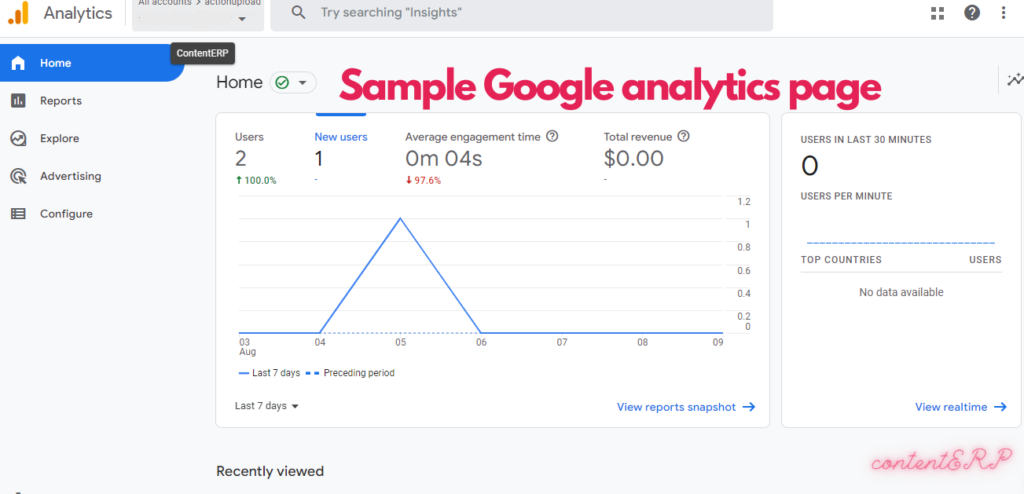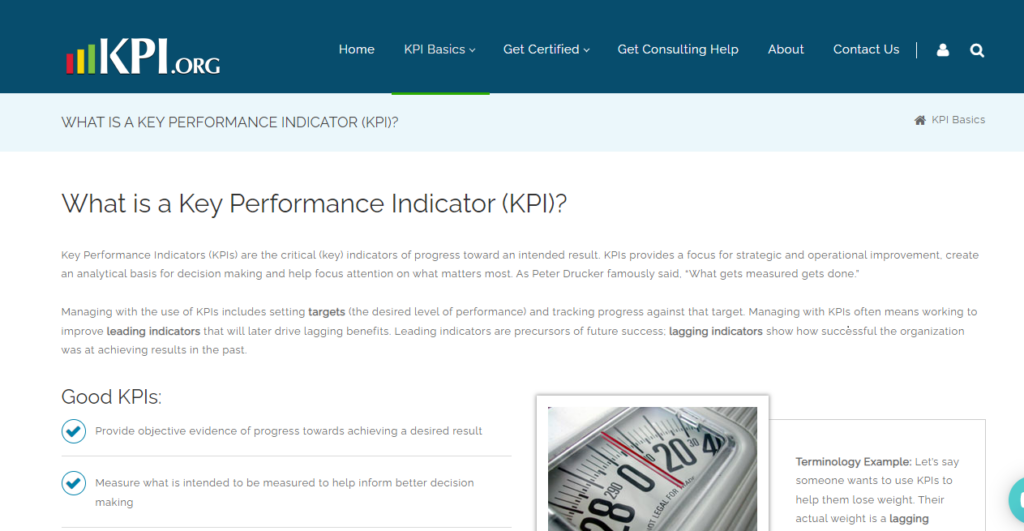How to measure the success of an SEO campaign?
The success of an SEO campaign is crucial to a proper online marketing strategy. Search engine optimization (SEO) is one of the most important and yet least understood aspects of online marketing. Optimizing your website for Google and other search engines can significantly improve your website’s traffic and help you to compete with larger businesses.
But how do you know whether your SEO efforts are successful? In this article, we’ll discuss some of the key ways to measure the success of your SEO campaigns, and we’ll provide some tips for improving your SEO performance.
What are SEO Performance Metrics?
Your marketing strategy should be based on the metrics that will provide you with the right insights into your SEO efforts. Metrics are the numbers that measure your success. You can’t measure something you can’t see.
To understand how to measure the success of an SEO campaign, you need to know what metrics to track. Metrics refer to the quantifiable measures of success. They can be called upon to collect data to gauge a specific campaign’s performance.

Keyword Ranking
The number one metric that SEO experts use to determine the success of an SEO campaign is keyword rankings. A properly set up SEO strategy can increase your rankings across the board, from the top spots in search results to the bottom.
Ranking high in organic results can also increase your conversion rate. The first step for a successful SEO campaign is identifying the keywords that will drive customers to your website. You can do this by conducting keyword research, an SEO process that involves identifying terms customers use when searching for products and services.
You can use tools like Google Trends and Google’s keyword planner to conduct keyword research. A good SEO campaign starts with targeted keywords and expands from there. You have to determine:
a) what are you trying to achieve with your SEO campaign and;
b) whether or not your keywords are effective.
Once you have defined your goals, you can create keyword lists with the goal of ranking them in the top 3 organic search results for your target keywords.

Content ranking.
Another metric to check is how many pages on your website are listed on the first page of Google for the keyword you are targeting. This is called Content Ranks. To determine this, go to Google and type in your target keyword. Click the Search button and scroll down to Search Engine Ranks. At the top of this page, look for the Content Ranks.
Organic Traffic
Organic search traffic comes from search engines like Google and other search engines. It is made up of searches that begin with a search engine keyword. Google and Bing will only rank websites with quality content that customers find helpful and relevant.
This is generally achieved through an SEO strategy that combines on-page and off-page optimizations. Organizations that have invested the time and resources into local SEO are better positioned to get the maximum amount of organic traffic.
Analytics and keywords used to direct traffic to a site can indicate whether or not the SEO strategy was successful. If organic traffic increases after implementing an SEO campaign, then the campaign should be considered a success. If traffic decreases, then the campaign is likely unsuccessful.
CTR
Converting visitors into leads and sales is one of the most important metrics for measuring your SEO strategy’s success. But it’s also an easy metric to overlook when considering all the other metrics you’ll be tracking.
It is crucial that you focus on this metric because it’s a quantifiable indication of how well you convert visitors into leads and customers. Google Analytics makes it easy to track this metric by comparing your site’s CPC (cost-per-click) with your site’s average CTR (click-through rate.)
That’s because the lower the difference between your CPC and your average CTR, the better you’re doing at converting visitors into leads.
cookie presence

Google Analytics offers another method of measuring your site’s CTR. This is a useful metric for measuring how many visitors are directed to your site through search results. You can see this information using the SEO Metrics Report, also included in Google Analytics.
Bounce rate
If you’re struggling with attracting users to your site, bounce rate can be a great way to see if your site design or SEO strategy prevents them from doing so.
As the name implies, this metric measures the percentage of users who leave your site after viewing one of your pages in search results. If this number is high, you should consider changing your site design or SEO strategy to improve your bounce rates.
Page rank
Page rank, or PR, is a measure of your site’s authority. It is a number that Google assigns to each of your pages that they crawl. The higher your page rank, the better your pages appear in Google’s results.
Domain authority
Domain authority indicates the number of other sites linking to your site. This number is an indicator of how much Google values your website. The higher it is, the more important it is to your search visibility.
So, for example, if you own a website for a local craft brewery, you might have a lot more authority than if you own a website for a different local craft brewery.
Page speed
Another metric that’s important to track is page speed. You might not think about it, but you’ve likely noticed that some pages on your site load a bit slower than others.
Suppose you’re not sure what to look for. In that case, your browser’s Developer Tools will show you the time it takes for your site to load. Pages that slow down can signal poor server performance, but they can also signal a slow-loading site. So knowing what to look for when reviewing your site’s performance is an important metric to track.

Total page views
A final metric you should monitor is total page views for your site. While some people might think they’re working hard to earn more links, they may not be aware that the amount of traffic they receive is also important. To a large extent, the more people visit a site, the better it is for SEO.
How Long Does It Take To See Results?
Various factors influence a website’s speed, including the number of unique visitors, page views, and impressions. Depending on your content and audience, it can take up to 12 months for a website to start showing results.
After these 12 months, you can start tracking your success using the same metrics discussed.
Key takeaways
- It is important to measure SEO performance as it is a long-term investment.
- There are three key metrics to measure as this is the end goal.
- Be sure to track these metrics regularly to get the most out of your investment and optimize for the long term.
- Consistent and sustained traffic growth is the key indicator of a successful SEO campaign.
- There is no one-size-fits-all approach to SEO, but the process can be applied to most websites.
Tools for Measuring & Reporting
Keyword ranking tool SEMrush
If you’re feeling overwhelmed by the sheer volume of metrics and the need to keep track of their values over time, consider using a keyword rank tracking tool. A keyword rank tracking tool will allow you to set up several keywords. Over time, you can monitor how they are performing.
Keywords are a vital component of any SEO strategy and can be used to gain insights into your website’s structural and technical elements. Keyword rank tracking tools come in various forms. Some, such as SEMRush, allow you to see the latest Google rankings for a keyword, whereas others provide a score or a rank percentile.
Google Analytics
Google Analytics is one of the most widely used tools for measuring organic traffic and reporting data. It’s a free tool and comes with a free version that offers all the basic features you need to get started.
You can use Google Analytics to measure your site’s performance, create goals, and analyze the data to discover patterns. This tool is handy for SEOs as it allows you to set goals and develop rich segments to help you measure the impact of your efforts.
Google Search Console
Google Search Console is a tool built by Google for its properties. It’s a free tool that allows you to track your website’s visibility in Google search results. The tool is split into three main areas: Search Console, Search Analytics, and Webmaster Tools. You can use Google Search Console to check your website’s status in Google search results.
KPI

KPI is a landing page tracking tool that helps you better understand your website’s performance. It provides a dashboard of key metrics such as bounce rates, time on page, pages per session, and more.
WANDOO
Wandoo is a free tool that helps you monitor your website traffic and conversion rates by segmenting traffic by channel, such as organic or referral. It lets you see where your traffic is coming from and then drill down to analyze the source of that traffic and its conversion rate.
Final Thoughts
I wish I could tell you that it’s all going to be easy. And it’s not. But all you have to do is to break it into a series of manageable tasks, and you can do it. You can make SEO work, even on a tight budget.
You can do your research if you strongly understand the client’s industry and goals. And build a plan around that.
You can do your research if you strongly understand the client’s industry and goals. And build a plan around that.,- If you are being realistic about the potential outcomes, you will be able to set realistic expectations.

